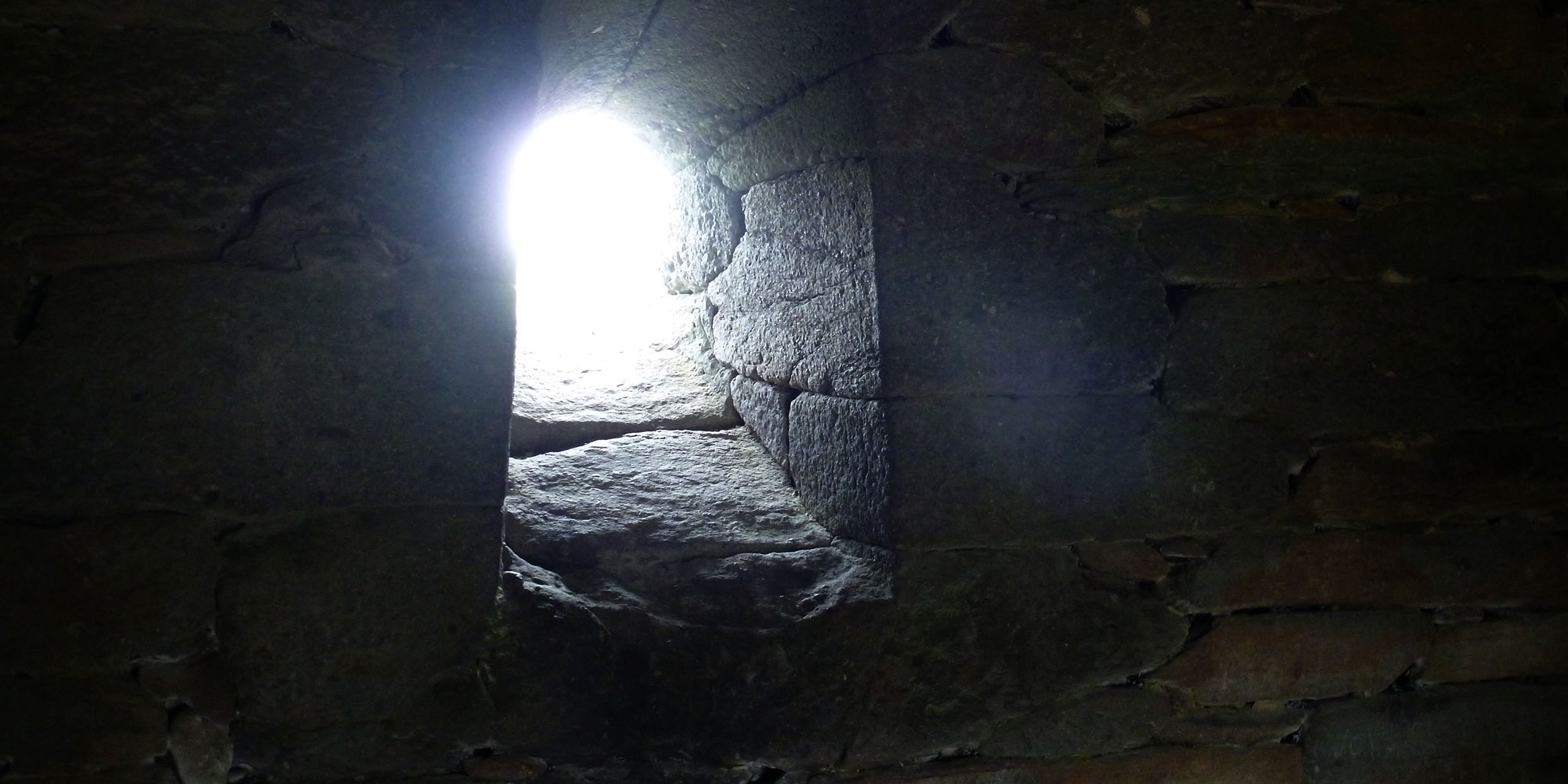Originally published 5 October 1998
A few weeks ago, in the west of Ireland, I spent a night in the Gallarus Oratory, a tiny 7th-century church of unmortared stone, the oldest intact building in Ireland, probably one of the oldest in Europe.
The oratory is about the size of a one-car garage, in the shape of an overturned boat. It has a narrow entrance at the front and a single tiny window at the rear, both open to the elements. Even in daytime one needs a flashlight to explore the interior.
I can’t say exactly why I was there, or why I intended to sit up all night unsleeping in that dark space. I suppose I wanted to experience something of whatever it was that inspired Irish monks to seek out these rough hermitages perched on the edge of Europe. Or should I say perched on the edge of eternity?
The Gallarus Oratory is something of a tourist mecca, but at night the place is isolated and dark, far from human habitation. From the door of the oratory, one looks down a sloping mile of fields to the twinkling lights of the village of Ballydavid on Smerwick Harbor.
The sun had long set when I arrived, although at the latitude of Ireland in summer the twilight never quite fades from the northern horizon. It was a moonless night, ablaze with stars, Jupiter brightest of all. Meteors occasionally streaked the sky. Satellites cruised their more stately orbits.
Inside, I snuggled into a back corner, tucked my knees under my chin, and waited. The darkness was palpable, pungent — “like going into a turfstack,” says Seamus Heaney in a poem about Gallarus. I could see nothing but the starlit outline of the door, not even my hand in front of my face. The silence was broken only by the low swish of my own breath.
As the hours progressed, I began to feel a presence, a powerful sensation of something or someone sharing that empty darkness. I am not a mystical person, but I knew that I was not alone, and I could imagine those hermit monks of the 7th century sharing the same intense conviction of “someone in the room.” At last, I was spooked to the point that I abandoned my interior corner and went outside.
A night of exceptional clarity. Stars spilling into the sea. And in the north, as if as a reward for my lonely vigil, the aurora borealis — the northern lights — danced towards the zenith.
How can I describe what I saw? Rays of silver light streaming up from the sea, as if from some enchanted Oz just over the horizon. Shimmering columns of fairy radiance, the black night made suddenly phosphorescent.
The aurora is caused by high energy electrons and protons hurled from the sun by massive magnetic storms on its surface. Several days later, this solar wind of particles slams into the Earth’s magnetic field, sculpting and shaping it, drawing it out into a long tail that points away from the sun.
The magnetic field in turn snares electrons from the wind and pumps them inwards along lines of magnetic influence. Down they dive, near the poles of the Earth, smashing into the rarefied air of the upper atmosphere, causing the atoms of the atmosphere to glow like the gas in a neon tube.
Photographs of the Earth from space show the planet permanently capped with a crown of light, at least where a pole resides in darkness. On almost any dark night near the Arctic and Antarctic circles the lights might be seen. Only occasionally, during particularly violent solar storms, does the aurora push down into the latitudes of Boston or Ireland.
Our knowledge of the aurora and its causes was not complete until the dawn of the space age, when rockets probed the upper atmosphere and measured the fluxes of solar particles spiraling up and down along lines of magnetic force. The lights in the sky are the signature of the magnetic and material entanglement of Earth and sun, the luminous badge of our place in the cosmos near a turbulent star.
As I watched the aurora from Gallarus I remembered something the 19th-century explorer Charles Francis Hall wrote while watching the aurora from the Arctic: “My first thought was, ‘Among the gods there is none like unto Thee, O Lord; neither are there any works like unto thy works!’ …We looked, we saw, we trembled.”
Hall knew he was watching a natural physical phenomenon, not a miracle, but his reaction suggests the power of the aurora even on a mind trained in the methods of science. What then did the monks of Gallarus think of the aurora, 1,300 years ago, at a time when the supernatural was the explanation of choice for exceptional phenomena?
Stepping out from the inky darkness of their stone chapel, the monks must surely have felt that the shimmering columns of light were somehow meant for them alone, a sign or a revelation, an answer to their prayers. And perhaps in a way they were right. They had placed themselves in circumstances where they might encounter the majesty and beauty of nature, something we have more or less forgotten how to do in our increasingly virtual lives.
We have left the age of miracles behind, but not, I trust, our sense of wonder.
As the sun lightened the sky in the east and the last shreds of aurora faded, I was suddenly startled by a pair of swallows that began to dart in and out of the Gallarus Oratory, hunting insects on the wing. I followed them inside and discovered a nest with three chicks perched on a protruding stone just above the place I had been sitting.
The mysterious presence I had felt so strongly in the darkness was not a god, nor spirit, nor succubus, nor demon, but the respirations and featherings of swallows.



